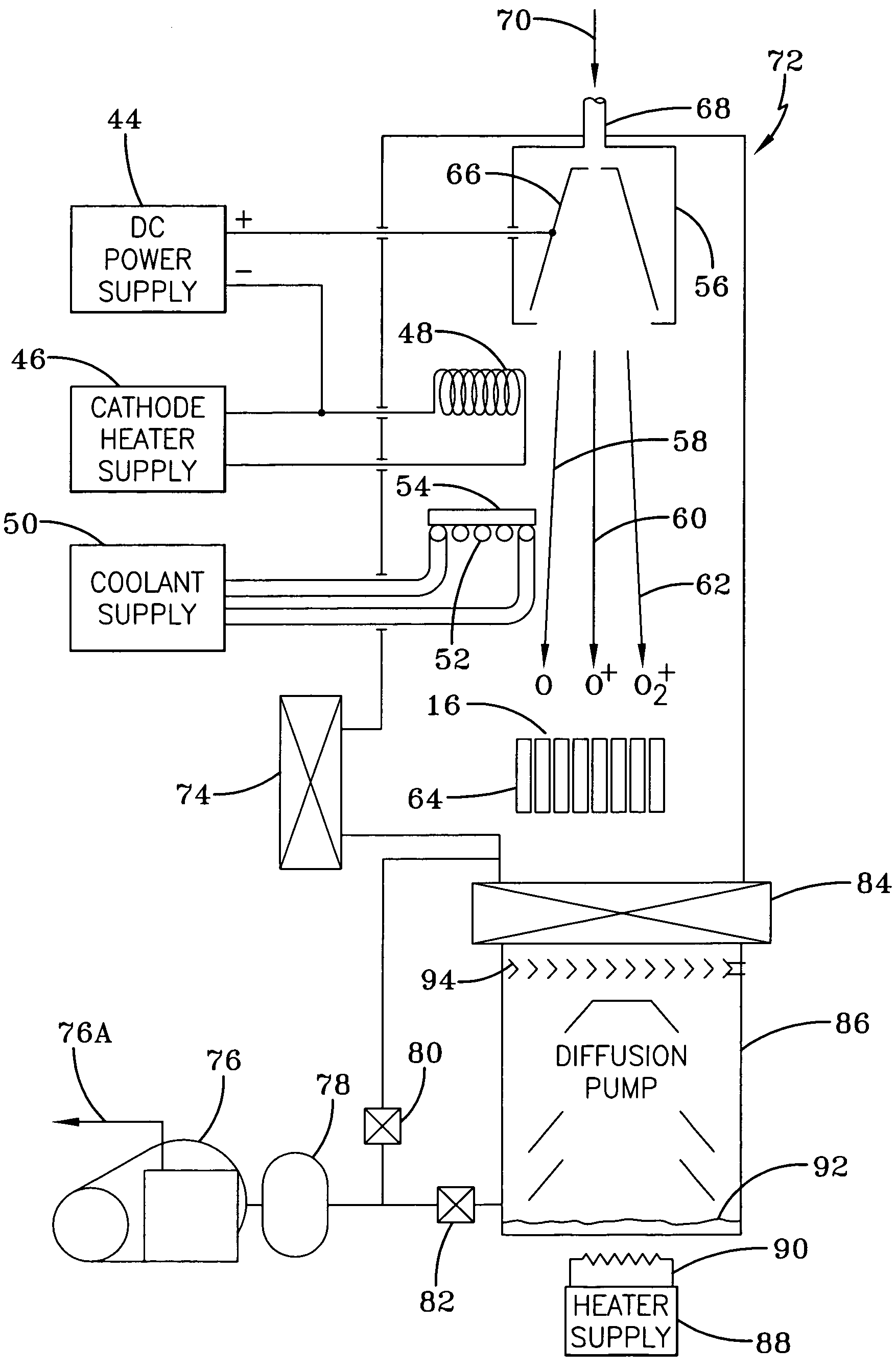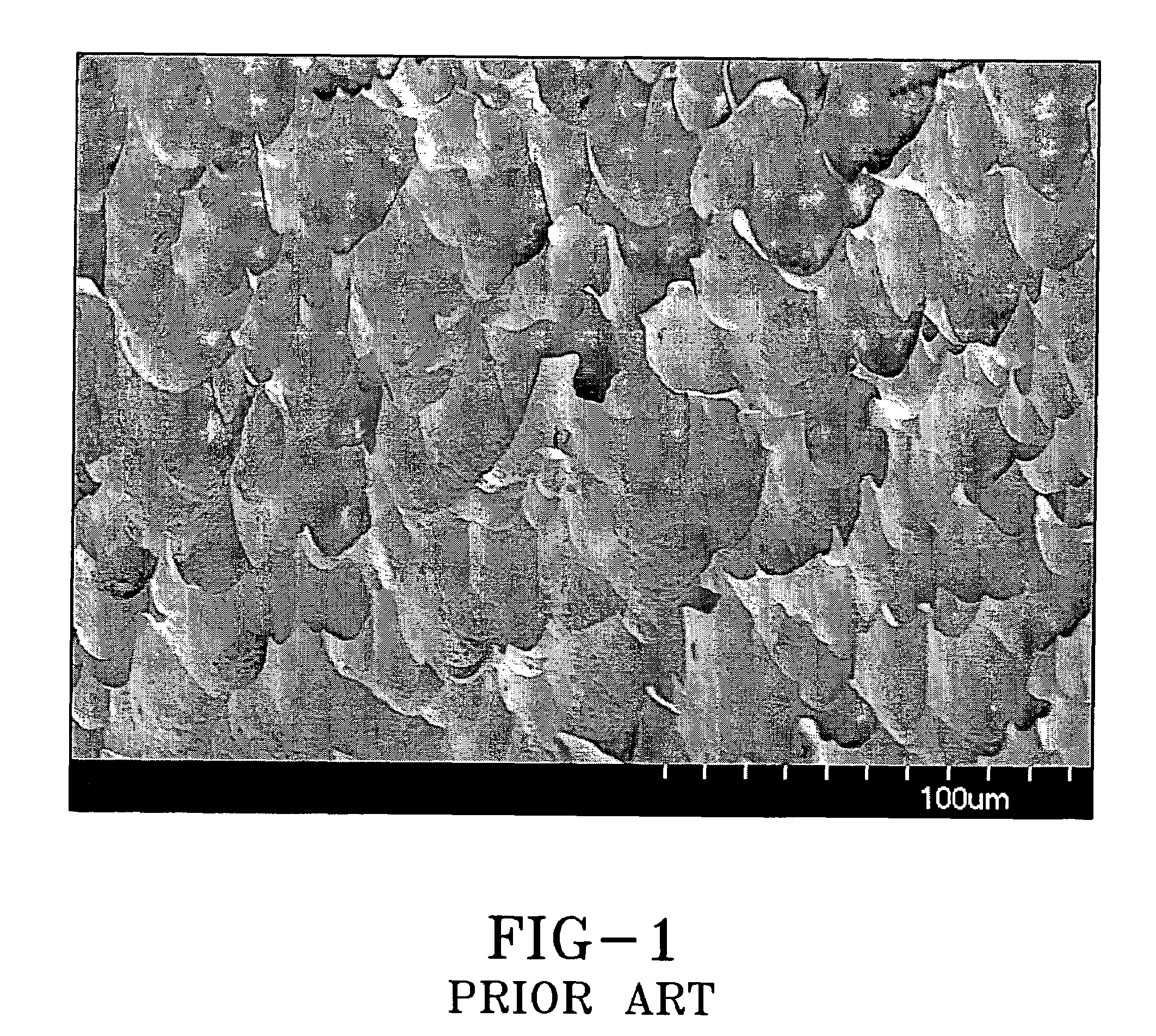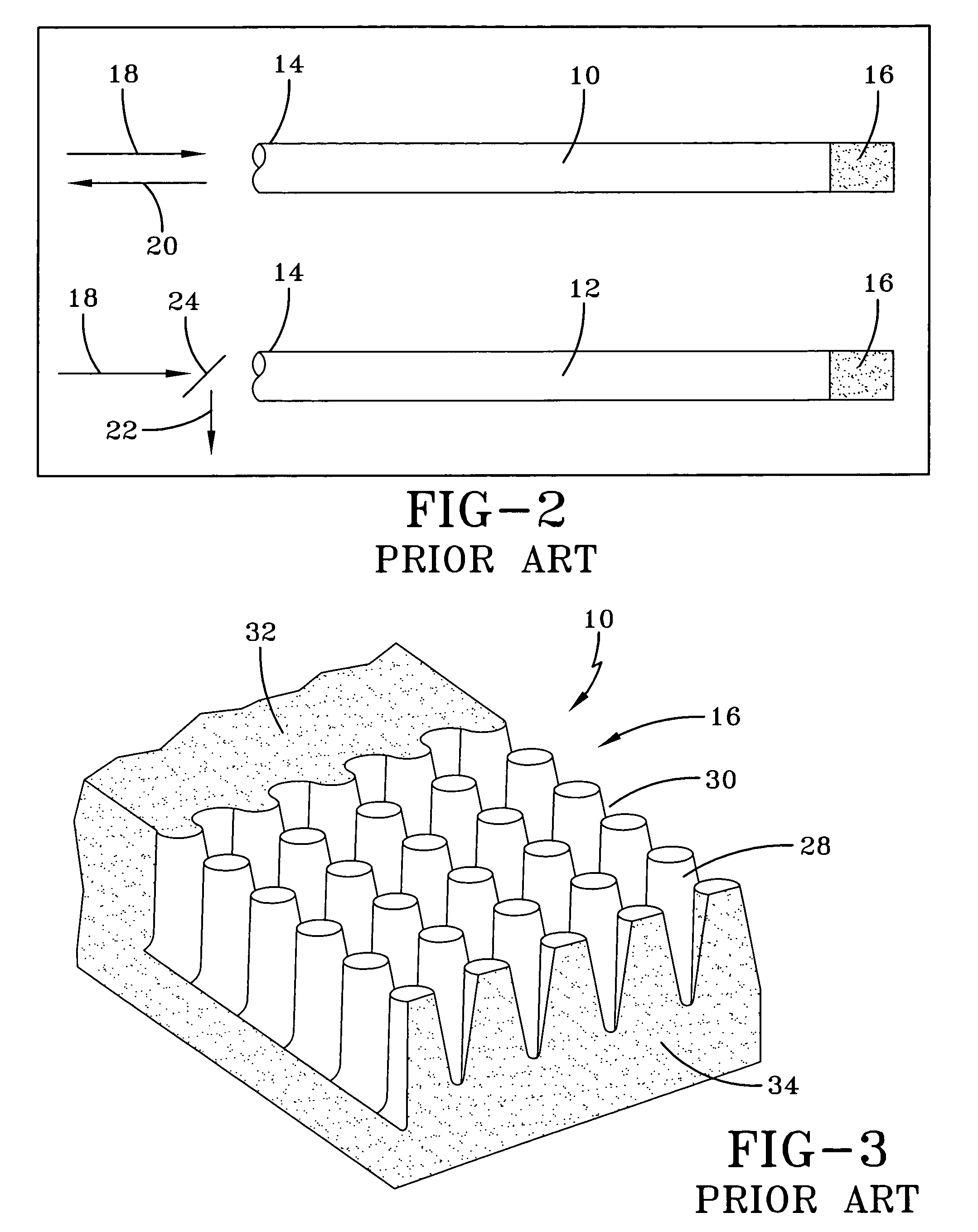Method for texturing surfaces of optical fiber sensors used for blood glucose monitoring
a technology of optical fiber and blood glucose, applied in the field of sensing devices, can solve the problems of insufficient size of blood sample for intended analysis, oversized blood sample, degree of pain associated with size and depth of penetration, etc., and achieve the effect of reducing the amount of blood, high surface area and reducing pain
- Summary
- Abstract
- Description
- Claims
- Application Information
AI Technical Summary
Benefits of technology
Problems solved by technology
Method used
Image
Examples
Embodiment Construction
[0025]One of the purposes of the present invention is to create a surface on optically transparent polymers which has closely spaced cones or pillars so as to prevent blood cellular components during optical monitoring from entering the valleys between the cones or pillars, which would otherwise interfere with the optical sensing of blood glucose concentration. It is also a purpose of the present invention to produce a high surface area of high aspect-ratio cones or pillars which are taller than they are wide so as to enable glucose sensing with a minimum volume of blood. The cellular components in blood predominantly consist of red blood cells (erythrocytes of 6.6-7.5 microns diameter) and white blood cells (leukocytes such lymphocytes of 8-10 microns diameter, neutrophils of 12-15 microns diameter, eosinophils of 12-15 microns diameter, basophils of 9-10 microns diameter and monocytes of 16-20 microns diameter). Thus, a 5 micron average spacing between cones or pillars would serve...
PUM
 Login to View More
Login to View More Abstract
Description
Claims
Application Information
 Login to View More
Login to View More - R&D
- Intellectual Property
- Life Sciences
- Materials
- Tech Scout
- Unparalleled Data Quality
- Higher Quality Content
- 60% Fewer Hallucinations
Browse by: Latest US Patents, China's latest patents, Technical Efficacy Thesaurus, Application Domain, Technology Topic, Popular Technical Reports.
© 2025 PatSnap. All rights reserved.Legal|Privacy policy|Modern Slavery Act Transparency Statement|Sitemap|About US| Contact US: help@patsnap.com



